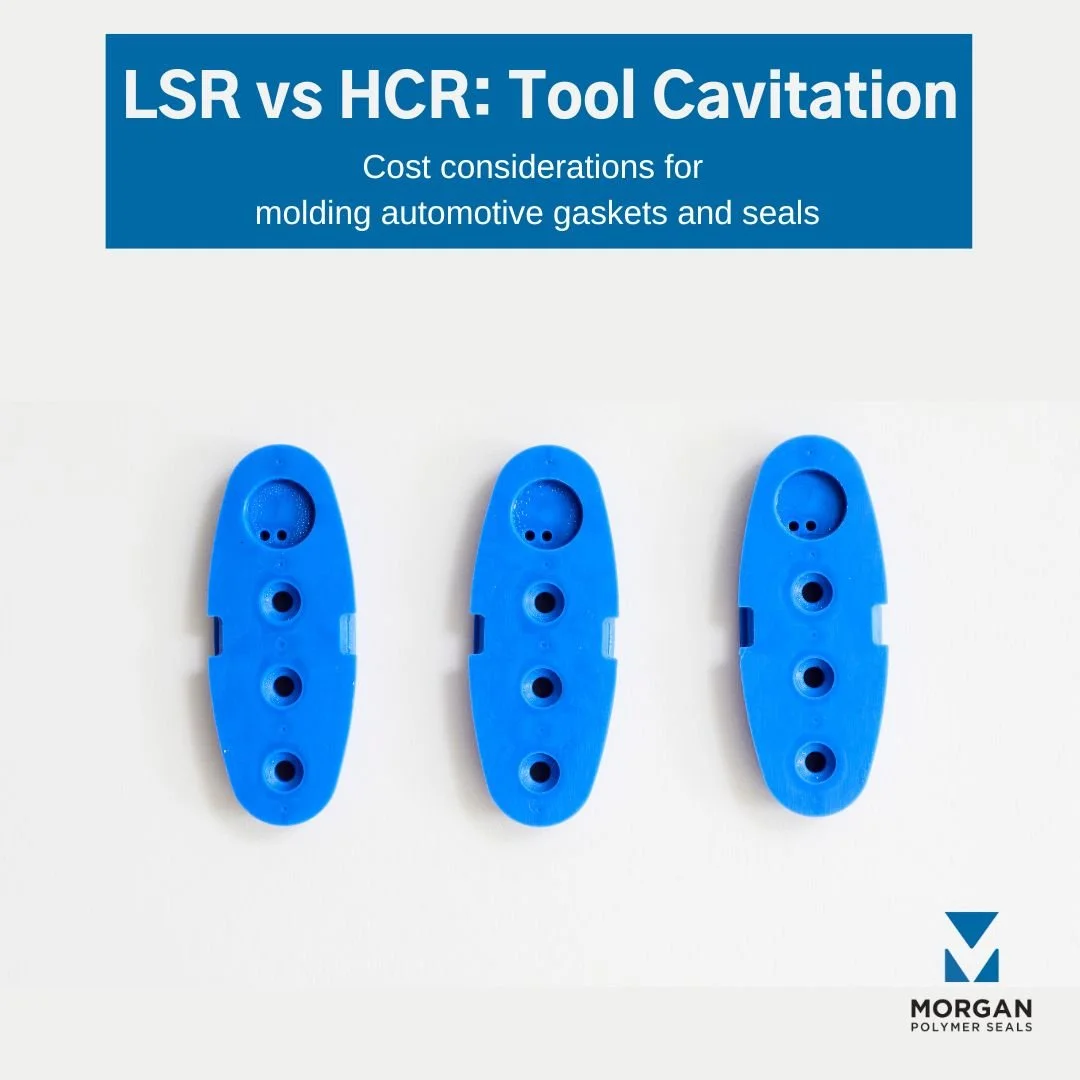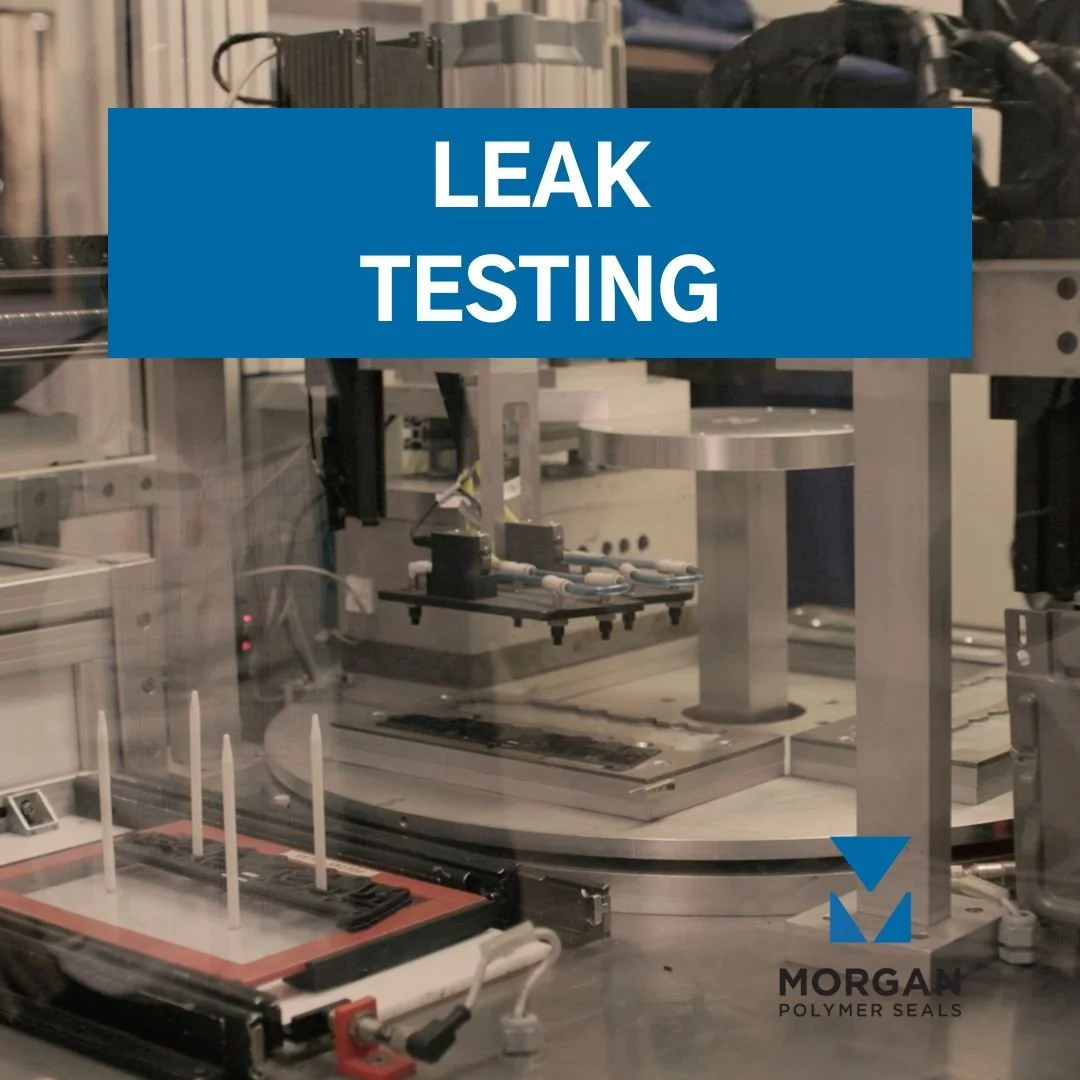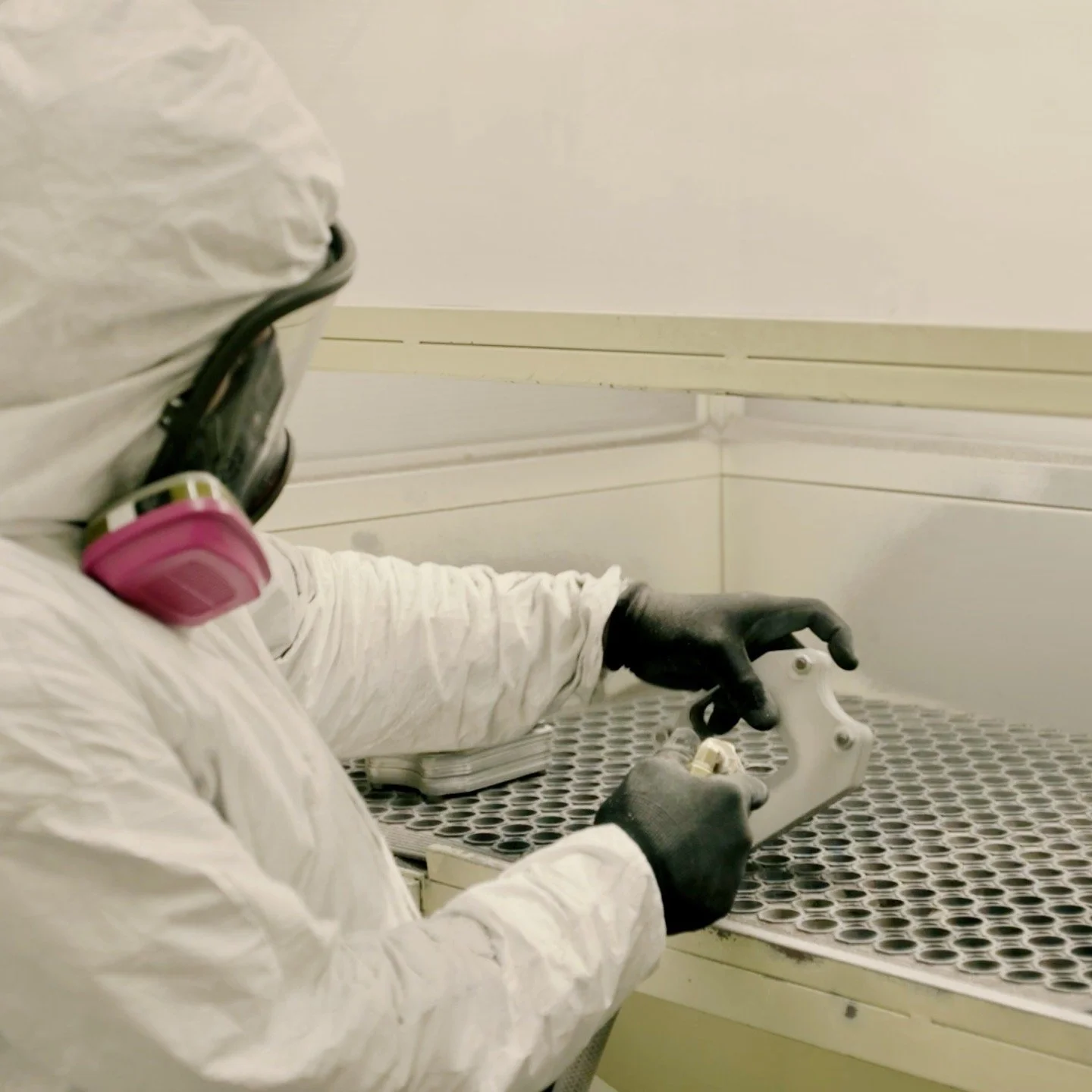LSR (Liquid Silicone Rubber) tools typically have fewer cavities and higher upfront costs compared to tools for HCR (High Consistency Rubber), but what are the other considerations for this process versus compression molding?
Read MoreLiquid Silicone Rubber (LSR) generally has faster cycle times in molding processes than High-Consistency Rubber (HCR), but that doesn’t always make LSR the preferred choice for molding automotive gaskets and seals. In this article, we explore why LSR cycle times are typically faster, and how faster cycle times can help reduce manufacturing costs for some automotive programs.
Read MoreOvermolding is a specialized manufacturing process that results in a seamless combination of multiple materials into a single part. Some overmolded seals use a physical bond, while others require a chemical bond. For overmolded seals that require a chemical bond, specialized adhesive coatings are often used due to several key reasons.
Read MoreIn addition to Silicone (VMQ), two materials commonly employed for molding electrical connectors are Liquid Silicone Rubber (LSR) and Heat Cured Rubber (HCR). This article explores the notable qualities of LSR and HCR and their respective uses in automotive gasket manufacturing.
Read MoreAt Morgan Polymer Seals, we perform two critical types of leak testing to help support quality manufacturing for our automotive OEMs: Pressure Decay Testing and Destructive Testing. Here’s a description of both methods, followed by a video that shows leak testing at our manufacturing sites in Mexico.
Read MoreCompression transfer molding and compression molding are related processes, but they are not the same. However, compression transfer molding can be considered a variation of compression molding with some key differences. Let's clarify the distinctions between these two processes, and watch a video that shows our compression transfer molding process in action.
Read MoreElastomer grommets and fastener seals are critical components in automotive design, providing sealing and vibration-damping solutions in various applications. This article explores the definition, applications, benefits, and advantages of elastomer grommets and fastener seals in the automotive industry. Additionally, it presents a selection of high-performance elastomer types commonly used for these purposes.
Read MoreElastomer PIP automotive gaskets are specialized sealing solutions designed to provide effective sealing under challenging conditions in automotive applications. These gaskets are typically made of elastomeric materials, commonly known as rubber, which exhibit excellent elasticity, resilience, and chemical resistance.
Read MoreIn this article, we will examine the types of silicone electrical connectors, the manufacturing process, and their application in the automotive manufacturing.
Read MoreAt Morgan Polymer Seals, we manufacture carrier gaskets using a wide range of elastomeric materials, and we use steel, aluminum, or plastic as the carrier "backbone." This article discusses carrier gaskets for automotive manufacturing, including their properties, design considerations, and manufacturing processes.
Read MoreGM tasked Morgan Polymer Seals to collaborate with ITW to design a mechanical seal for a new capless refueling system in the Cadillac CT6. The custom seal system had to reduce hydrocarbon emissions, seal on the fuel fill-nozzle, and remain flexible at a temperature down to -40°C. This article looks at the design process and how successful seal design is achieved for an automotive application.
Read MoreA seal’s design has the highest impact on its overall cost and quality, so we enjoy supporting your technical team throughout the entire design process.
Let’s take a look at the timeline and steps involved for the successful design of automotive gaskets and seals.
Read MoreHere are just a few of the pre-mold, and post-mold capabilities that support the gaskets and seals we manufacture in Mexico.
Read MoreCompression molding is one of the lowest-cost molding methods with regard to tooling and equipment.
Read MoreOf significant importance in the effectiveness of the injection molding process are the capabilities of the injection press itself. In this article, we highlight some of the key equipment features that promote satisfactory injection molding for automotive gaskets and seals.
Read MoreInjection molding is one of the most popular processes for achieving high-quality and cost-effective gaskets and seals.
In this article, we explain the process and its key benefits for precision molding in Mexico.
Read MoreSome seals are relatively simple, made entirely of rubber. But sometimes a critical system requires sealing components that are more complex than a simple rubber seal.
In these situations, overmolding may be necessary to achieve optimal sealing performance for challenging applications.
Read MoreIn rubber gasket molding, takeover tooling is when an OEM/manufacturer switches to a different supplier and continues using the same tool, or mold, used by their previous supplier to produce the part with a new supplier.
Read More

















